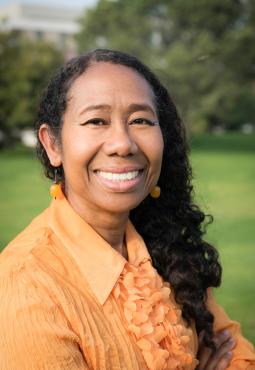There are a few reasons to feel good about the latest statistics from the American Cancer Society (ACS). Every year, ACS looks at cancer trends across the country — the number of new cases and number of deaths — and tracks the changes.
According to their recently released report, cancer deaths peaked in 1991, but diagnostic and treatment advances, along with personal behavior changes (most significantly, a drop in the number of people who smoke), have made a difference: Mortality rates have dropped 33% in the last three decades.

The report “shows that we can collectively help drive positive results with a multifaceted approach to cancer care,” said Clayton S. Lau, M.D., City of Hope’s chief of the Division of Urology and Urologic Oncology and the Pauline & Martin Collins Family Chair in Urology.
Virtually every cancer has become less lethal. Breast cancer mortality is down 43% since 1989. Colorectal cancer deaths have shrunk 55% since 1980. Leukemia, melanoma and kidney cancer deaths are all declining, albeit more slowly.
In one case — cervical cancer — the turnaround is profound. Thanks to the HPV (human papillomavirus) vaccine, available to girls and young women since 2006, cervical cancer rates dropped an astounding 65% in the years 2012 to 2019.
Not even the COVID-19 pandemic could stop this welcome decline. Despite the fact that many people delayed their normal screenings and checkups, and thereby increased the likelihood of cancers going undetected into later stages, the overall numbers still went down.
An Outlier
And yet, when physicians, researchers and social scientists closely examine the ACS report, many react with alarm. That’s because one stubborn cancer is bucking the downward trend, and one ethnic group continues to pay a deadly, disproportionate price.
After decades of decline, prostate cancer rates increased 3% a year from 2014 to 2019 and, says Lau, “there is a significant increase among men presenting with later-stage prostate cancer.”
Why is this happening? Public policy may play a role.
The key to stopping prostate cancer, and many other cancers, is early detection. For many years, the prostate-specific antigen, or PSA, test caught numerous cases of prostate cancer in its earliest stages. Doctors encouraged their patients to get tested, and many complied.
But in 2012, the U.S. Preventive Services Task Force — an independent panel of experts in disease prevention and evidence-based medicine — recommended against PSA-based screening for prostate cancer, out of concern that the harms, such as false positives and unnecessary procedures with unpleasant side effects for slow-growing cancers, outweighed the benefits.
Then, in April 2017, the task force modified its advice again and, while not specifically promoting PSA testing, endorsed individual decision-making for men aged 55 to 69 years.
Such whiplash-like change — get tested, don’t get tested, discuss testing with your doctor — probably led to inaction, experts say.

“People got confused,” said urologic surgeon Diana Londoño, M.D., assistant clinical professor in the Division of Urology and Urologic Oncology, Department of Surgery, who sees patients at City of Hope’s Glendora clinical network location. She emphasized the importance of regular screenings, especially post-pandemic, as people resume seeing their doctors regularly.
The official ACS statement lamented the new findings.
“The increasing percentage of men presenting with advanced prostate cancer, which is much more difficult to treat and often incurable, is highly discouraging,” said Karen E. Knudsen, M.B.A., Ph.D., chief executive officer of ACS. “In order to end cancer as we know it, for everyone, it is imperative for us to focus on cancer where trends for incidence and mortality are going in the wrong direction.”
Nowhere is this trend more disturbing, and the need to reverse it more urgent, than in the African American community, a situation that persists despite all of the advances and progress of recent years.
According to the ACS report, Black men have a 70% higher prostate cancer incidence rate compared with white men, and they are two to four times more likely to die of prostate cancer than any other ethnic group.
“This is a great concern,” said Lau, “and we need to encourage physicians [to recognize] this and have conversations [about] the importance of prostate cancer screening with their patients.”
Making a Difference
Those who study racial disparities in health care have pointed to this particular gap for many years. To them, the new statistics are shocking, but not surprising.
“The Black/white difference is staggering,” said Kimlin Tam Ashing, Ph.D., City associate director of City of Hope’s Center for Community Outreach and Engagement and deputy director of City of Hope’s Division of Health Equities. And not just in prostate cancer. The ACS report says Black women are 40% more likely to die from breast cancer than white women, and they also have the highest death rates from uterine cancer. The last statistic is deeply personal to Ashing; her 36-year-old niece was recently diagnosed with uterine cancer.

Part of the problem, says Ashing, is the lack of access to quality health care in some communities. She is hopeful that the recently passed California Cancer Care Equity Act will begin to address this by enabling Medi-Cal patients to receive treatment at comprehensive cancer centers. Other states could conceivably follow California’s example.
It is also imperative, Ashing says, to provide better healthcare education in the African American community and speak to the lingering distrust of the medical establishment. “The onus is on the medical community,” she said, “to engage in cultural training and to show some cultural humility.”
In order to reach out to underserved communities where cancer rates are high, ACS unveiled a new initiative called IMPACT (Improve Mortality From Prostate Cancer Together), aimed at reducing both prostate cancer disparities in Black men and deaths from prostate cancer for all men by 2035.
The Center for Community Outreach and Engagement runs several programs aimed at the same result. They include community advocates: specially trained health leaders to increase awareness at the grassroots level. There are also partnerships with church groups and civic organizations — places known and trusted by community members — to schedule discussion groups and health fairs. Independent community groups, such as Witness to Fitness, co-host forums with City of Hope, such as Sisters Can We Talk and Brothers Talk Too, to nurture community education and activation for cancer prevention.
Education is critical, agreed urologist Londoño. “Most people don’t realize that prostate cancer can be a silent disease with no symptoms. This is why screening tests are so important.”
And there’s no time to waste, urged Lau. “This represents the greatest mortality disparity in cancer. We need to act now.”
